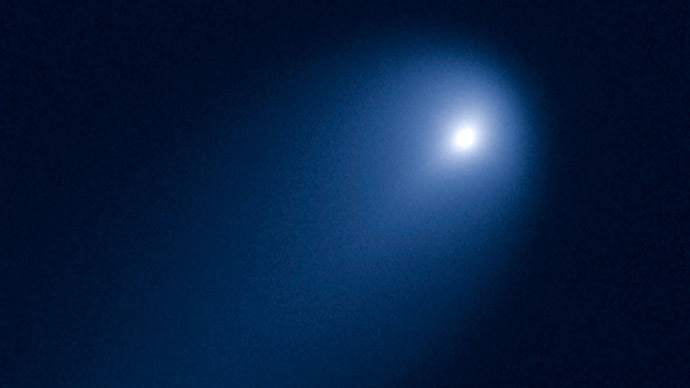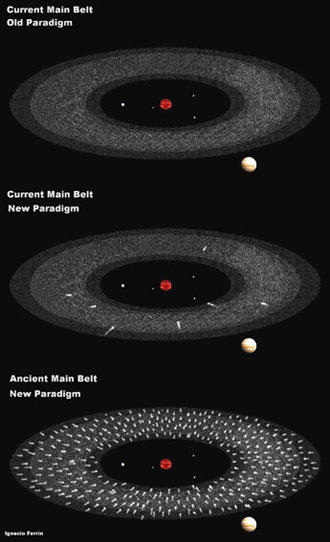Astronomers discover comets in asteroid belt that can revive after millions of years

Astronomers have discovered a ‘comet graveyard’ within the Solar system’s asteroid belt, consisting of ‘Lazarus comets’ that could jump back to life after having been inactive for millions of years.
The ‘enormous graveyard of ancient dormant and extinct rocky comets’ was discovered in the asteroid belt between Mars and Jupiter, according to researchers from the University of Antioquia in Colombia.
Meanwhile, comets are traditionally thought to come from two much further locations – the Kuiper Belt and the Oort Cloud, trans-Neptunian objects that lie at extreme distances from the Sun.
In the last decade twelve active comets have been discovered in the asteroid main belt region, but scientists have managed to describe their origin for the first time.
The researchers believe the asteroid belt could have once held thousands of active comets but over time these comets lost energy and became dormant.
"These objects are the 'Lazarus comets', returning to life after being dormant for thousands or even millions of years. Potentially any one of the many thousands of their quiet neighbors could do the same thing," said the leading astronomer of the study Professor Ignacio Ferrin.

The astronomers named the celestial bodies ‘Lazarus comets’ referring to the biblical figure Lazarus who was resurrected by Jesus Christ several days after his death.
These comets may represent a long-lost population of the icy chunks of rocks, thought to have started out near the fringes of the planetary system, said the astronomers.
Comets’ resurrection
'Lazarus comets' can come back to life when they pass relatively close to Jupiter, the biggest planet of the Solar System, and the shape of their orbits is tugged by Jupiter’s gravity, bringing them closer to the sun, increasing the temperature, according to the study published in the Monthly Notices of the Royal Astronomical Society.
“Imagine all these asteroids going around the Sun for eons, with no hint of activity. We have found that some of these are not dead rocks after all, but are dormant comets that may yet come back to life if the energy that they receive from the Sun increases by a few per cent,” said Ferrin.
The rising of the average temperature warms the subsurface ice and the gases, vaporizing some of the water trapped inside. This causes a display of visible atmosphere – a signature coma or a tail of glowing gas and dust behind it.
The source of these comets – the asteroid belt – contains millions of small celestial objects, ranging in size from 1 kilometer to 800 kilometers, according to the study.
Asteroids are remnants of disrupted planet formation, solid objects that could have become planets but the process was interrupted by the gravitational pull of Jupiter. Asteroids differ from comets as they are found closer to the sun and do not produce a temporary atmosphere.
“The surprising property of these objects [Lazarus comets] is that their orbits are entirely asteroidal while their behavior is entirely cometary,” the researchers wrote.
Most comets observed by scientists have highly elliptical orbits, meaning that they only rarely approach the Sun. These comets have been dubbed long period comets, as some of them take thousands of years to complete each orbit around our nearest star. There is also a population of about 500 known short period comets, which are formed when long period comets pass near Jupiter and are deflected in orbits that last anything between three and 200 years.
Although it is very uncommon, comets can collide with the Earth
from time to time and may have helped bring water our planet.














